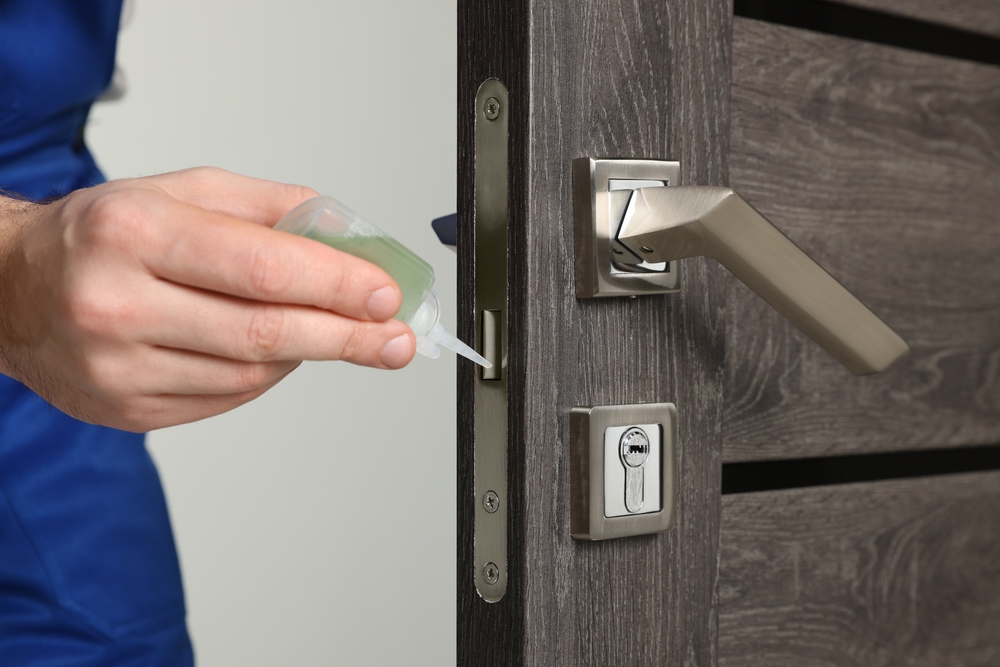
Why is Lock Lubrication Important?
August 30, 2024 7:09 pm Leave your thoughtsLock lubrication is a critical aspect of maintaining the security and functionality of your locks. Many people overlook this simple maintenance task, but regular lubrication can prevent common issues and extend the lifespan of your locks. In this article, we’ll explore why lock lubrication is important, how to lubricate a lock effectively, and the best practices to keep your locks in top condition.
Lock Lubrication
Lock lubrication involves applying a specialized lubricant to the moving parts inside a lock. This helps to reduce friction, prevent corrosion, and ensure smooth operation. Locks, whether they are for doors, cars, or safes, rely on a delicate balance of internal components working together seamlessly. Without proper lubrication, these components can wear down, leading to malfunctions or even complete failure.
Why Lock Lubrication is Crucial
- Prevents Sticking and Jamming
Locks that are not regularly lubricated can become sticky or jammed. This is especially problematic in high-use areas or in extreme weather conditions. A well-lubricated lock will operate smoothly, allowing you to turn the key or use the handle with ease. - Reduces Wear and Tear
Over time, the internal components of a lock can experience significant wear and tear due to friction. Regular lubrication helps to minimize this friction, reducing the wear on the lock’s internal parts and extending its lifespan. - Protects Against Rust and Corrosion
Many locks are exposed to the elements, which can cause rust and corrosion over time. Lubricants often contain anti-corrosive properties that protect the lock from moisture and other corrosive substances, ensuring it continues to function properly. - Enhances Security
A well-maintained lock is more reliable and secure. If a lock becomes difficult to operate due to lack of lubrication, it could compromise your security. Regular lubrication ensures that your lock remains secure and functions correctly when you need it.
How to Lubricate a Lock
Proper lock lubrication involves a few simple steps. Here’s a detailed guide on how to lubricate a lock effectively:
Tools and Materials Needed
- Lock Lubricant: Use a lubricant specifically designed for locks. Graphite powder and silicone-based lubricants are commonly recommended.
- Key: You’ll need the key for the lock you are lubricating.
- Cloth: A clean cloth or paper towel for wiping away excess lubricant.
- Compressed Air: Optional, but helpful for removing dust and debris from the lock mechanism.
Step-by-Step Guide
- Clean the Lock
Before applying lubricant, clean the lock to remove any dirt, dust, or old lubricant. Use compressed air to blow out debris from the keyhole and surrounding area. Wipe the exterior of the lock with a clean cloth. - Apply the Lubricant
If you’re using graphite powder, insert the tip of the applicator into the keyhole and sprinkle a small amount of powder inside. If you’re using a silicone-based lubricant, spray or apply a small amount into the keyhole. Be cautious not to overapply, as excess lubricant can attract dirt. - Insert and Rotate the Key
Insert the key into the lock and turn it back and forth several times. This helps distribute the lubricant evenly throughout the lock mechanism. If the lock is sticking, this step will help work the lubricant into the internal components. - Wipe Away Excess Lubricant
Use a clean cloth to wipe away any excess lubricant from the exterior of the lock and key. This prevents buildup and keeps the area clean. - Test the Lock
After lubricating, test the lock to ensure it operates smoothly. If you notice any issues, reapply a small amount of lubricant and continue testing until the lock functions properly.
Best Practices for Lock Lubrication
To ensure the best results and maintain the functionality of your locks, follow these best practices:
Choose the Right Lubricant
- Graphite Powder: Ideal for traditional pin tumbler locks. It’s dry and doesn’t attract dirt.
- Silicone-Based Lubricants: Suitable for various types of locks, including those exposed to moisture. It provides a longer-lasting protective layer.
Avoid Oil-Based Lubricants
Oil-based lubricants, such as WD-40, are not recommended for lock lubrication. They can attract dust and dirt, which can lead to gumming up the lock mechanism over time.
Regular Maintenance
- Frequency: Lubricate your locks at least once a year. If you live in an area with extreme weather conditions or heavy use, you might need to lubricate more frequently.
- Inspection: Regularly inspect your locks for signs of wear or issues. Addressing problems early can prevent more significant issues later.
Professional Help
If you encounter persistent problems with your locks despite regular lubrication, it might be time to consult a professional locksmith. They can assess the situation and recommend repairs or replacements if necessary.
Conclusion
Lock lubrication is a simple yet essential maintenance task that can significantly impact the performance and longevity of your locks. By following the steps outlined in this guide and adhering to best practices, you can ensure that your locks remain secure, functional, and reliable. Remember, a well-lubricated lock is not only easier to operate but also contributes to the overall safety and security of your property. Don’t overlook this crucial aspect of lock maintenance—regular lubrication is key to keeping your locks in top condition.
Need a Locksmith in Toledo, OH?
Welcome to Toledo Lock & Key LLC! Toledo Lock & Key LLC has been servicing Toledo and the surrounding areas since 1980. We are a locally owned company whose services include automotive, residential, commercial, and anything in between. We have an excellent staff that is very fast and reliable. We are experts in automotive work and key cutting, so give us a call today!
Categorised in: Lock Maintenance
This post was written by admin
